Introduction
In the past six months, several tragic stampedes have occurred in varied settings, including religious gatherings, sports events, and railway stations, highlighting critical gaps in crowd management systems. Events of large-scale demand flawless planning, clear communication channels, structured crowd movement strategies, extensive route and risk assessments, robust emergency protocols, medical response preparedness, and intelligent security deployment.
Despite the scale and anticipated challenges of these gatherings, several safeguards may have proved insufficient or absent. The recurrence of such tragedies underscores the urgent need for enhanced preparedness and systemic improvements in crowd management practices. The lack of proper planning is evident due to the paucity of time.
Crowd management is not merely a logistical task—it is a core aspect of public safety and risk mitigation. Whether in stadiums, large gatherings, concerts, or mass protests: Failure to regulate crowd flow, density, and behavior can swiftly lead to disaster.
These incident highlights how poor planning can turn a large gathering into an emergency. While we await further reports of various incidents, here are key points to prevent critical failures at high-attendance events:
What Causes Stampedes
Stampedes are sudden, chaotic movements of a crowd, often leading to injuries or fatalities due to crushing, suffocation, or trampling. They are not caused by panic alone—multiple physical, psychological, and environmental factors combine to trigger them. Understanding these causes is the first step toward prevention. The Health and Safety Executive in Great Britain explored activity risks and found that two factors lead in the risk of stampede. One is caused by crowd factors, and the other involves location factors.
- High crowd density increases risks like restricted movement, pressure waves, and breathing difficulties.
- Poor infrastructure, such as narrow exits and lack of escape routes, exacerbates crowd vulnerabilities.
- Lack of communication or information during emergencies leads to confusion and panic.
- Triggering events like loud noises or weather conditions can initiate sudden crowd surges.
- Behavioral factors, such as following others or aggressive actions, worsen crowd management issues.
- Untrained or inadequate crowd control personnel delay effective intervention during crises.
Key Problem Areas in Crowd Management
Every large gathering—whether a sports event, concert, religious festival, or political rally—must begin with a sound estimation of expected footfall, a clearly mapped movement route, coordinated access control, and layered safety mechanisms. The foundation of successful crowd management lies in anticipating flow patterns, identifying chokepoints, and aligning manpower and infrastructure accordingly.
When these essential preparations are overlooked or underestimated, the consequences can escalate rapidly. The following points highlight the most critical weaknesses observed during the any large gathering each of which represents a key failure that should be addressed in any future large-scale public event:
Severe Overcrowding and Density Misjudgment
- Inadequate capacity estimation and absence of pre-registration systems
- Entry permitted without real-time monitoring or restriction
- Zero control on inflow once crowd exceeded manageable thresholds
Flawed Infrastructure and Poor Layout Planning
- Narrow entry/exit points and no dedicated emergency lanes
- Confusing or missing signage leading to mass misdirection
- Barricades placed without strategic intent, increasing bottlenecks
Untrained or Insufficient Manpower
- Security teams and event staff unequipped to handle crowd psychology
- Lack of marshals trained in diffusing tension or guiding emergency dispersals
- Volunteer force lacked clear briefing or communication tools
Uncontrolled Entry & Ineffective Queuing Systems
- Absence of structured waiting zones or staggered gate entry
- No unidirectional flow enforcement; chaotic pushing and backflow
- Unauthorized access through unsecured perimeters
Unpreparedness for Environmental or Triggering Events
- No contingency for weather changes, sudden loud noises, or panic triggers
- Emergency evacuation drills not conducted
- Medical response teams delayed or poorly positioned for rapid action
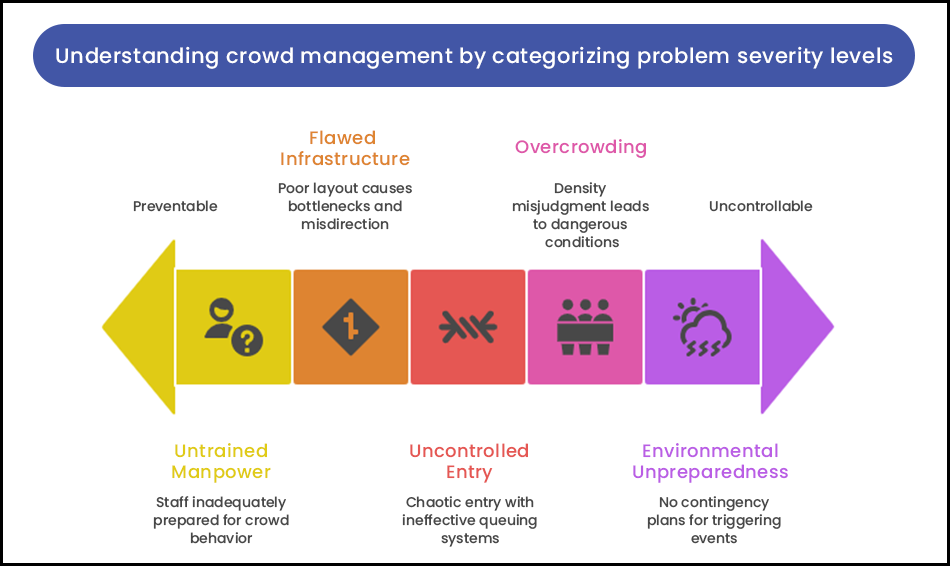
The Role of Communication in Crowd Management
Effective communication is the backbone of crowd control, ensuring both situational awareness and calmness among attendees.
Pre-Event Communication
- Ensure multilingual instructions to cater to diverse audiences.
- Inform attendees about:
- Entry points and restrictions.
- Emergency exits and assembly points.
- Prohibited items and conduct guidelines.
- Use multiple channels: SMS alerts, social media, signage, announcements.
Real-Time Communication During Events
- PA Systems & Visual Signage: Vital for directing crowds without causing panic.
- Mobile Apps & Push Notifications: Deliver live updates in case of route changes, delays, or alerts.
- Staff Communication: Equipping personnel with radios and clear protocols allows real-time problem solving.
Post-Event Debrief
- Feedback mechanisms (surveys, social media monitoring) can reveal crowd experience pain points and inform future improvements.
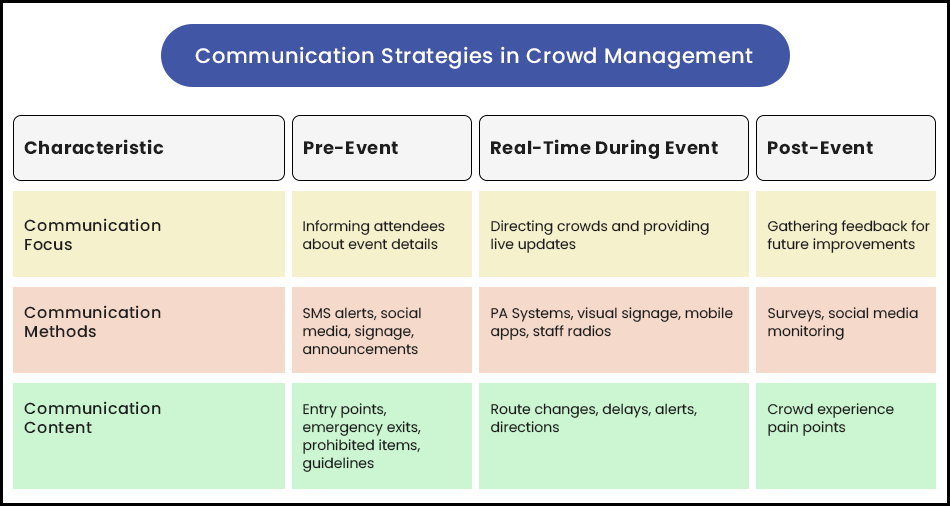
Integration of Crowd Management into Disaster Planning
Crowd safety must be embedded into broader emergency and disaster response frameworks.
Risk Assessment and Scenario Planning
- Conduct pre-event simulations and predictive modeling (e.g., crowd heat maps).
- Identify high-risk zones and prepare for multiple scenarios: fire, medical emergencies, structural collapse, hostile threats.
Emergency Response Coordination
- Cross-functional coordination between police, fire services, EMS, and event organizers is critical.
- Have clearly defined Incident Command Systems (ICS) and pre-designated roles.
Evacuation Planning
- Evacuation drills should consider crowd behavior (e.g., tendency to exit from the same entrance used to enter).
- Ensure accessibility for the elderly, disabled, and children.
Technology in Disaster Response
- CCTV + AI Analytics: To monitor crowd density and detect abnormal movements.
- Drones: Useful for live aerial surveillance during large outdoor gatherings.
- Wearables or RFID: For crowd movement tracking and emergency alerts.
Best Practices for Effective Crowd Management
The proven strategies that contribute to effective, proactive crowd management:
Route Survey
- Conduct a route survey to monitor crowd movement.
- Check the entry and exit points.
- Identify hospitals along the route and inform them about the rally. Collect their contact numbers and prepare a list.
- Establish strategic points for handling emergencies.
Emergency Numbers
- Space planning should prioritize movement dynamics, not just static occupancy.
- Implement staggered entry/exit systems and directional signage.
- Ensure that emergency contact numbers are prominently displayed at strategic locations. Emergency hotlines must be tested prior to the event to confirm functionality.
Design for Flow, Not Just Capacity
- Space planning should prioritize movement dynamics, not just static occupancy.
- Implement staggered entry/exit systems and directional signage.
Use of Barriers and Zoning
- Use physical barriers to create buffer zones, control queues, and segregate groups.
- Plan choke point management with stewards stationed at key nodes.
Staff Training and Simulation Drills
All personnel should undergo regular training on:
- Crowd psychology.
- Conflict de-escalation.
- Medical response and CPR.
Conduct mock drills simulating real-life scenarios.
Stakeholder Engagement
- Involve law enforcement, medical teams, transportation providers, and local authorities early in the planning phase.
- Ensure interoperability of communication systems across agencies.
Learning from Incidents
- Maintain a log of near-misses, incidents, and evacuation performance.
- Conduct after-action reviews (AARs) to continuously refine protocols.
Framework
A simple framework is given below: Courtesy:
DR W G PRASANNA KUMAR,
PROFESSOR AND HEAD CLIMATE AND DISASTER MANAGEMENT
DR MCR HRD INSTITUTE
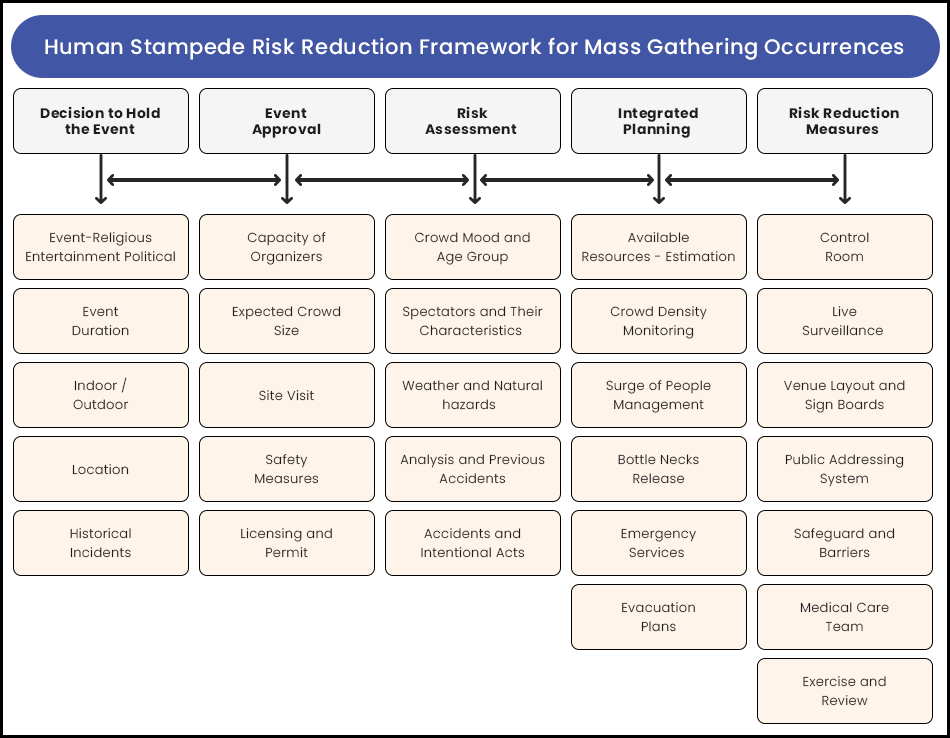
Conclusion
Crowd management is more than just security—it is a holistic, anticipatory discipline that requires planning, real-time monitoring, rapid communication, and contingency planning. The ultimate objective is to safeguard human life while maintaining an orderly and positive experience for all attendees.
Organizations responsible for managing large crowds must move beyond reactive crowd control to proactive crowd planning. Embedding these principles into standard operating procedures will significantly reduce the risks of chaos, injury, or tragedy. In the digital age, using available tools can help prevent such incidents.

Mr. Dhiraj Ullal
Head - Risk Management
Can't find your industry?
Connect with us to explore Insurance solutions
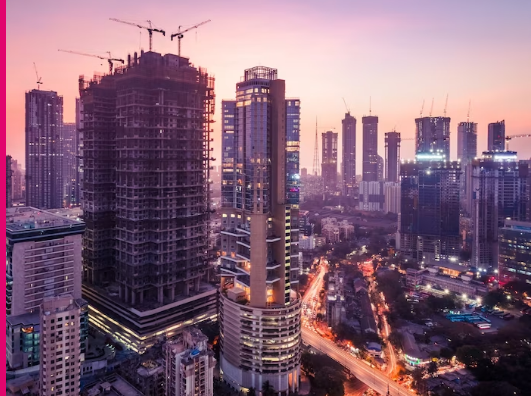
Insuring What Matters: A Deep Dive into Margin Clause in Property Insurance
Protecting your property is crucial, but navigating insurance policies can be complex and confusing.

The Future of Clinical Trials: India's Rise as a Global Hub
As the global landscape of clinical trials evolves, India is emerging as a leading hub for conducting research.

Why Risk Management is Key for Business Resilience?
As the global landscape of clinical trials evolves, India is emerging as a leading hub for conducting research.
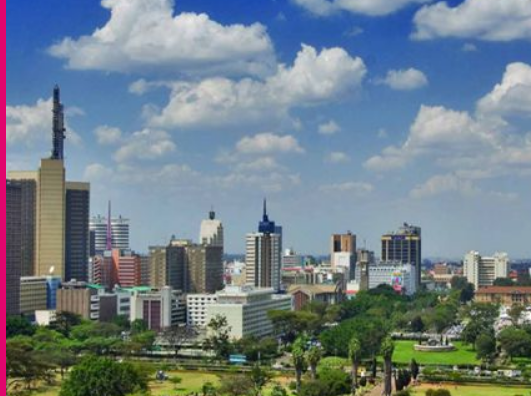
Kenya's Insurance Industry : Growth Amidst Challenges
Presenting the first report of our series “Insurance Around the World”. We kick off our global exploration with Kenya.

The truth about diet trends
In the age of social media, diet trends come and go—one day it's keto, the next it's intermittent fasting. But how do you know if these diets are truly right for you?
